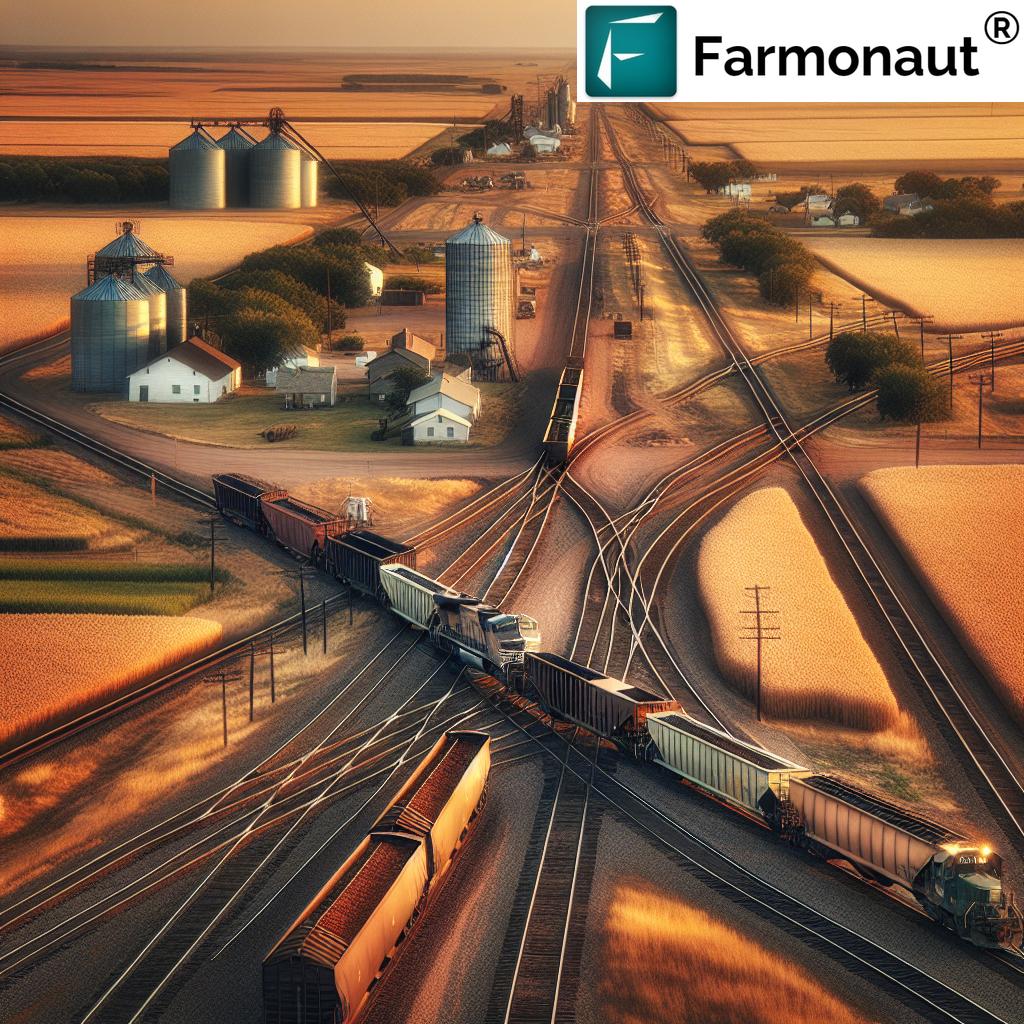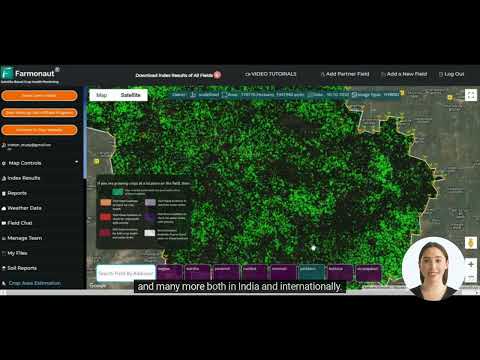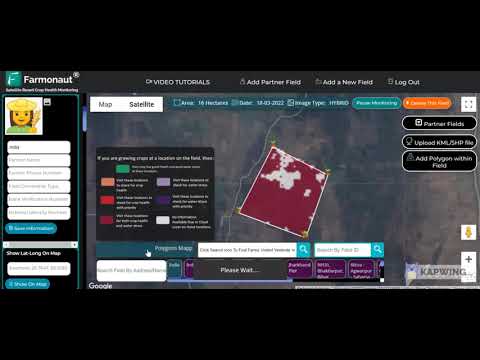Oklahoma’s Rail Revolution: Unveiling the Midwest’s Thriving Short Line Railroad Network
“Oklahoma’s short line railroad network spans hundreds of miles, connecting key industrial and agricultural hubs across the Midwest.”
Welcome to our comprehensive exploration of Oklahoma’s vibrant railroad network and short line operations. In this in-depth overview, we’ll take you on a journey through the heart of the Midwest’s thriving freight rail services. From the bustling tracks of Tulsa to the grain-hauling lines of El Reno, we’ll uncover the fascinating world of short line railroads that play a crucial role in Oklahoma’s transportation infrastructure.
The Rich History of Oklahoma’s Rail Transportation System
Oklahoma’s railroad history is as rich and diverse as the state itself. The development of rail lines in the late 19th and early 20th centuries played a pivotal role in shaping the state’s economy and geography. Today, this legacy continues with a network of short line railroads that have adapted to modern freight needs while preserving the spirit of Oklahoma’s rail pioneers.
Let’s delve into some of the key players in Oklahoma’s short line railroad landscape:
Arkansas-Oklahoma Railroad (AOK)
The Arkansas-Oklahoma Railroad, also known as the A-OK Railroad, is a privately-held short line that has been in service since 1996. Operating over 100 miles of track, the AOK utilizes segments of the former Rock Island’s Choctaw Route between Howe and McAlester, as well as between Shawnee and Midwest City.
What sets the AOK apart is its steady increase in carloadings since its inception. The railroad’s long-term vision includes plans to open more sections of the former Choctaw line, further expanding its reach and capacity.
Farmrail Corporation (FMRC)
Farmrail Corporation is a testament to the adaptability and growth potential of short line railroads. Beginning operations in 1981 with just 82 miles of leased track from the Rock Island’s former Choctaw Route, Farmrail has since expanded significantly. Today, including its subsidiary Grainbelt (GNBC), Farmrail’s network spans an impressive 350 miles.
The company’s growth story is intertwined with Oklahoma’s agricultural sector. Farmrail’s expansion has been driven by its commitment to serving agriculture interests, making it a vital link in the state’s farm-to-market supply chain.

Stillwater Central Railroad (SLWC)
The Stillwater Central Railroad, a Watco property, is one of Oklahoma’s larger short line operations. With more than 275 miles of track connecting Tulsa, Duke, Pawnee, and Stillwater, the SLWC has been steadily growing its traffic since its establishment in 1998.
The railroad’s diverse traffic base includes transload services, agriculture, petroleum products, minerals, and industrial products. This variety of cargo types underscores the importance of short line railroads in supporting multiple sectors of Oklahoma’s economy.
The Economic Impact of Short Line Railroads in Oklahoma
Short line railroads are more than just tracks and trains; they’re economic lifelines for many communities across Oklahoma. These smaller railroads play a crucial role in connecting local businesses to the national rail network, facilitating the movement of goods and supporting local economies.
Let’s explore some key aspects of their economic impact:
- Job Creation: Short line railroads are significant employers in many small towns and rural areas.
- Business Support: They provide essential transportation services for local industries, especially in agriculture and manufacturing.
- Infrastructure Investment: Many short lines invest in track improvements and maintenance, enhancing local infrastructure.
- Environmental Benefits: Rail transport is more fuel-efficient than trucking, reducing carbon emissions and supporting sustainability goals.
“The state’s rail system plays a crucial role in transporting agricultural products, minerals, and industrial goods from cities like Tulsa and El Reno.”
Connecting Agricultural Hubs: The Lifeline of Oklahoma’s Economy
Agriculture is the backbone of Oklahoma’s economy, and short line railroads play a vital role in connecting farms to markets. These railroads efficiently transport crops, fertilizers, and other agricultural products, supporting the state’s farming communities.
For instance, the AT&L Railroad, owned by the Wheeler Brothers Grain Company, operates about 50 miles of former Rock Island grain branches. Running between El Reno (where it interchanges with UP), Watonga, and Bridgeport, this short line is crucial for transporting grain, fertilizer, and other agricultural products.
Similarly, the Cimarron Valley Railroad (CVR) operates 254 miles of former Santa Fe trackage across Kansas, Oklahoma, and Colorado. Its primary focus on agricultural traffic underscores the importance of these short lines in supporting the region’s farming industry.
The Role of Technology in Modern Rail Operations
While we’re discussing the importance of rail transportation in agriculture, it’s worth noting how modern technology is transforming both industries. For instance, companies like Farmonaut are revolutionizing farm management with satellite-based solutions. While not directly related to rail operations, such technologies complement the efficiency that short line railroads bring to the agricultural sector.
Farmonaut’s platform offers services like real-time crop health monitoring and AI-based advisory systems, which can help farmers make informed decisions about when and how to transport their produce. This synergy between agricultural technology and rail transportation is paving the way for more efficient and sustainable farming practices.
Industrial Rail Transport: Powering Oklahoma’s Manufacturing Sector
Beyond agriculture, Oklahoma’s short line railroads are instrumental in supporting the state’s industrial and manufacturing sectors. These rail lines transport a wide range of materials and finished products, from chemicals and plastics to cement and steel.
The Kiamichi Railroad (KRR), for example, operates 261 miles of track, serving diverse industries. Its traffic consists of coal, lumber, aggregates, minerals, glass, paper, chemicals, cement, pulpwood, feed, and food products. This variety of cargo types demonstrates the crucial role short lines play in supporting Oklahoma’s diverse industrial base.
Spotlight on Specialized Short Lines
Some of Oklahoma’s short lines specialize in serving specific industries or locations. For instance:
- Port of Muskogee Railroad (PMR): This short line operates 5.5 miles of industrial trackage in Muskogee, Oklahoma, managed by the Muskogee City-County Port Authority.
- Sand Springs Railway (SS): With a history tracing back to 1911, this railroad has evolved from an interurban passenger service to a vital freight carrier serving the Tulsa area.
- WFEC Railroad (WFEC): Built in 1997, this 15-mile short line serves the coal-fired Hugo Power Plant at Fort Towson, demonstrating the importance of rail in supporting Oklahoma’s energy infrastructure.
The Future of Short Line Railroads in Oklahoma
As we look to the future, Oklahoma’s short line railroads are poised for continued growth and adaptation. Many of these railroads are investing in track improvements, exploring new traffic opportunities, and adopting technologies to enhance efficiency and safety.
Some key trends shaping the future of Oklahoma’s short line railroads include:
- Technological Advancements: Implementation of GPS tracking, automated inspection systems, and predictive maintenance technologies.
- Sustainability Initiatives: Adoption of more fuel-efficient locomotives and exploration of alternative fuels to reduce environmental impact.
- Intermodal Growth: Increased focus on intermodal transportation to provide seamless connections with trucking and other transportation modes.
- Infrastructure Investment: Ongoing efforts to upgrade tracks and bridges to accommodate heavier loads and higher speeds.

Comparative Analysis of Oklahoma’s Short Line Railroads
To better understand the landscape of Oklahoma’s short line railroads, let’s take a look at a comparative analysis of some key operators:
| Railroad Name | Operational Length (miles) | Primary Commodities Transported | Key Service Areas | Annual Freight Volume (estimated tons) | Economic Impact (estimated annual contribution) |
|---|---|---|---|---|---|
| Farmrail Corporation | 350 | Grain, Fertilizer, Oil Products | Western Oklahoma | 50,000 – 100,000 | $20 – $30 million |
| Stillwater Central Railroad | 275+ | Agriculture, Petroleum, Minerals | Central Oklahoma | 100,000 – 150,000 | $30 – $40 million |
| Kiamichi Railroad | 261 | Coal, Lumber, Aggregates, Chemicals | Southeastern Oklahoma | 150,000 – 200,000 | $40 – $50 million |
| Arkansas-Oklahoma Railroad | 100+ | Mixed Freight | Eastern Oklahoma | 25,000 – 50,000 | $10 – $20 million |
| Cimarron Valley Railroad | 254 | Agriculture Products | Oklahoma Panhandle | 75,000 – 100,000 | $25 – $35 million |
This table provides a snapshot of the diverse operations and economic contributions of Oklahoma’s short line railroads. It’s clear that these railroads play a significant role in the state’s economy, transporting millions of tons of freight annually and contributing substantially to local and regional economic development.
The Role of Short Lines in Regional Connectivity
Oklahoma’s short line railroads are not just isolated operations; they form a crucial part of the larger regional and national rail network. By connecting with Class I railroads like BNSF, Union Pacific, and Kansas City Southern, these short lines ensure that goods from Oklahoma’s farms, factories, and mines can reach markets across the country and beyond.
For example, the South Kansas & Oklahoma Railroad (SKOL) operates 404 miles of track, connecting Tulsa, Oklahoma to several points throughout southeastern Kansas. This extensive network allows for seamless transportation of goods across state lines, enhancing regional economic integration.
Innovative Approaches to Rail Operations
Many of Oklahoma’s short line railroads are adopting innovative approaches to enhance their operations and better serve their customers. These innovations include:
- Transload Facilities: Short lines are developing transload facilities to allow for easy transfer between rail and truck, providing more flexible shipping options for customers.
- Customer-Centric Services: Many short lines offer personalized services tailored to the specific needs of local industries, such as just-in-time delivery or specialized handling for sensitive cargo.
- Collaborative Partnerships: Short lines are forming partnerships with each other and with Class I railroads to offer more comprehensive transportation solutions.
The Impact of Short Line Railroads on Local Communities
The influence of short line railroads extends beyond mere transportation. These railroads often become integral parts of the communities they serve. They contribute to local economies not just through direct employment and business support, but also through community engagement and historical preservation.
For instance, the Tulsa-Sapulpa Union Railway (TSU), with its rich history dating back to 1907, serves as both a vital freight carrier and a living piece of Oklahoma’s transportation heritage. Such railroads often participate in local events, offer educational programs, and maintain historic structures, enriching the cultural fabric of their communities.
Environmental Benefits of Short Line Rail Transport
In an era of increasing environmental consciousness, short line railroads offer significant environmental benefits. Rail transportation is generally more fuel-efficient and produces fewer emissions per ton-mile compared to trucking. By providing an alternative to long-haul trucking, Oklahoma’s short lines contribute to reduced road congestion and lower overall transportation-related emissions.
This aligns well with broader sustainability initiatives. For instance, while not directly related to rail transport, technologies like those offered by Farmonaut’s carbon footprinting solutions can help businesses in various sectors, including transportation, monitor and reduce their environmental impact. Such synergies between different industries and technologies are crucial for building a more sustainable future.
Challenges and Opportunities for Oklahoma’s Short Line Railroads
While Oklahoma’s short line railroads have shown remarkable resilience and adaptability, they face several challenges:
- Infrastructure Maintenance: Many short lines operate on legacy infrastructure that requires significant investment to maintain and upgrade.
- Competition from Trucking: The flexibility of truck transportation poses a constant competitive challenge, especially for shorter hauls.
- Regulatory Compliance: Keeping up with evolving safety and environmental regulations can be resource-intensive for smaller operators.
- Economic Fluctuations: Short lines are often closely tied to specific industries, making them vulnerable to sector-specific economic downturns.
However, these challenges also present opportunities:
- Technology Adoption: Implementing new technologies can improve operational efficiency and safety, making short lines more competitive.
- Diversification: Exploring new types of cargo and services can help short lines reduce dependency on single industries.
- Collaboration: Partnerships with other transportation modes and logistics providers can create more comprehensive shipping solutions.
- Sustainability Leadership: By emphasizing their environmental benefits, short lines can attract environmentally conscious customers and potentially access green funding initiatives.
The Future of Rail in Oklahoma: Integrating with Modern Technologies
As we look to the future, the integration of modern technologies will play a crucial role in shaping the evolution of Oklahoma’s rail network. While railroads focus on improving their physical infrastructure and operations, complementary technologies in other sectors are creating new opportunities for synergy and efficiency.
For instance, in the agricultural sector, which is a major customer for many of Oklahoma’s short lines, technologies like satellite-based farm management systems are revolutionizing how farms operate. Farmonaut’s platform, for example, offers real-time crop health monitoring and AI-driven insights that can help farmers optimize their production and logistics planning.
This kind of technological integration could lead to more efficient coordination between farmers and railroads, potentially reducing waste, improving timing of shipments, and enhancing overall supply chain efficiency. While Farmonaut itself is not involved in rail operations, its technology represents the kind of innovation that could indirectly benefit the rail industry by improving the efficiency of its customers.
Conclusion: The Vital Role of Short Lines in Oklahoma’s Economic Landscape
Oklahoma’s short line railroads are more than just a network of tracks and trains; they are vital arteries of commerce, connecting the state’s diverse industries to national and global markets. From the grain fields of western Oklahoma to the industrial centers of Tulsa, these railroads play a crucial role in supporting the state’s economy and maintaining its competitiveness in the global marketplace.
As we’ve explored in this comprehensive overview, the short line railroad network in Oklahoma is characterized by its diversity, adaptability, and deep integration with local communities and industries. These railroads face challenges, but they also stand at the cusp of exciting opportunities, driven by technological advancements and changing economic landscapes.
The future of Oklahoma’s rail network looks bright, with ongoing investments in infrastructure, adoption of new technologies, and a continued focus on customer-centric services. As the state moves forward, its short line railroads will undoubtedly continue to play a pivotal role in shaping Oklahoma’s economic destiny, connecting its past with a promising future.
FAQs about Oklahoma’s Short Line Railroads
- What is a short line railroad?
A short line railroad is a small or mid-sized railroad company that operates over a relatively short distance. They typically connect smaller markets and industries to the larger national rail network. - How many short line railroads are there in Oklahoma?
Oklahoma has over a dozen short line railroads, including notable operators like Farmrail, Stillwater Central Railroad, and Kiamichi Railroad. - What types of goods do Oklahoma’s short line railroads transport?
They transport a wide variety of goods including agricultural products (grain, fertilizer), industrial materials (chemicals, cement), minerals, petroleum products, and manufactured goods. - How do short line railroads contribute to Oklahoma’s economy?
Short lines contribute by providing essential transportation services, creating jobs, supporting local industries, and facilitating trade. They also often invest in local infrastructure and participate in community development. - Are short line railroads environmentally friendly?
Yes, rail transportation is generally more fuel-efficient and produces fewer emissions per ton-mile compared to trucking, making short line railroads a more environmentally friendly option for freight transportation.
Earn With Farmonaut: Affiliate Program
Earn 20% recurring commission with Farmonaut’s affiliate program by sharing your promo code and helping farmers save 10%. Onboard 10 Elite farmers monthly to earn a minimum of $148,000 annually—start now and grow your income!
Explore Farmonaut’s innovative solutions:






